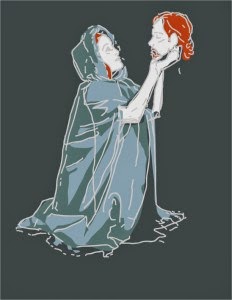Note:this is a Repost of an Announcement (Additional images are by Helen Stratton)
Hans Christian Andersen's Fairy Tales
Explore the fairy tale world of H.C. Andersen - the inspiration behind The Little Mermaid and Frozen - with this free online course.
ABOUT THE COURSE
This free online course will introduce you to some of Hans Christian Andersen’s most popular fairy tales, share the story of the writer himself, and discuss his cross-cultural importance today, as the inspiration behind many popular books and movies.
 Interpret Hans Christian Andersen’s fairy tales with experts from his birthplace
Interpret Hans Christian Andersen’s fairy tales with experts from his birthplace
You will learn with experts from the HC Andersen Center at the University of Southern Denmark – an internationally renowned research institution located in the writer’s birthplace, Odense.
Each week, these experts will guide a discussion, analysis and interpretation of one of Hans Christian Andersen’s fairy tales, including:
- The Tinderbox
- The Travelling Companion
- The Little Mermaid
- The Snow Queen (the inspiration for Disney’s Frozen)
- The Story of a Mother
- The Red Shoes
You will explore the themes of each story, and investigate how they both conform with and digress from the fairy tale. This genre became very popular in the period of literary history to which Hans Christian Andersen belongs, Romanticism, when childhood was discovered as an age that is important in its own right.
But what Hans Christian Andersen did with this genre is absolutely unique - there are no other writers of fairy tales like him.
 Explore Hans Christian Andersen’s enduring, universal appeal
Explore Hans Christian Andersen’s enduring, universal appeal
The majority of Hans Christian Andersen’s 157 fairy tales have been translated into at least 150 languages. They not only create a fantasy world for children, but also explore universal, sinister and more adult themes such as death, grief and loss.
Through this course, you will discover why his stories have such an enduring and universal appeal - for both children and adults.
Understand the writer’s life - from humble beginnings to global fame
Hans Christian Andersen often described himself as a “bog plant” - his roots were deeply anchored in mire and mud, but he constantly stretched up for the light of the sun.
Through the course, you will understand this analogy, reflecting on how the writer grew from humble beginnings, to achieve fame and acknowledgement as an artist in both Europe and America while he was in his prime. After his death, he became famous in Asia and all other parts of the world.
REQUIREMENTS
You will need a basic ability to read and understand Hans Christian Andersen’s fairy tales in English. Otherwise, a curiosity about and a love for the fairy tale genre is the sole prerequisite for the course.



































